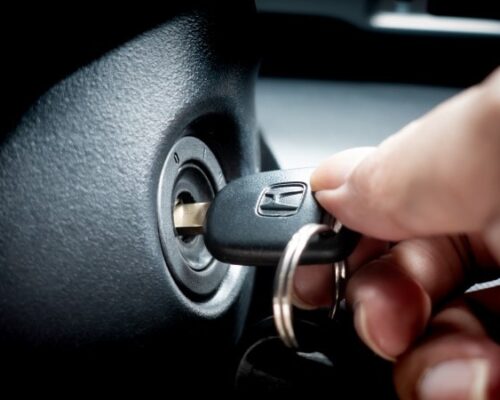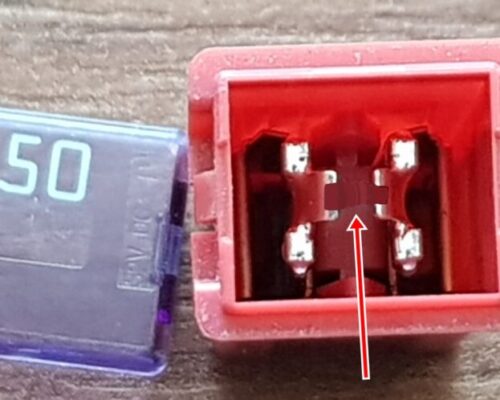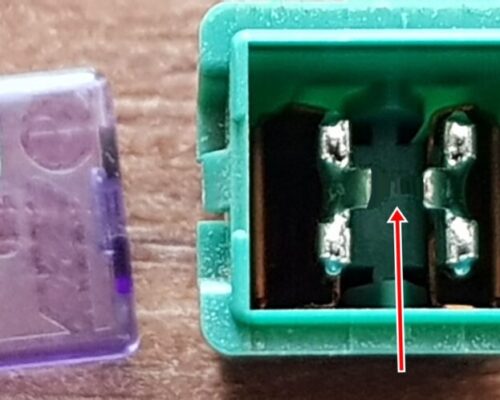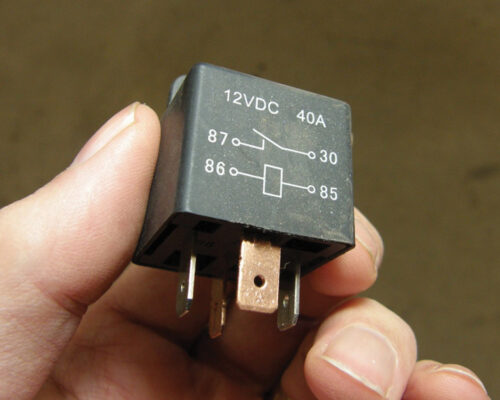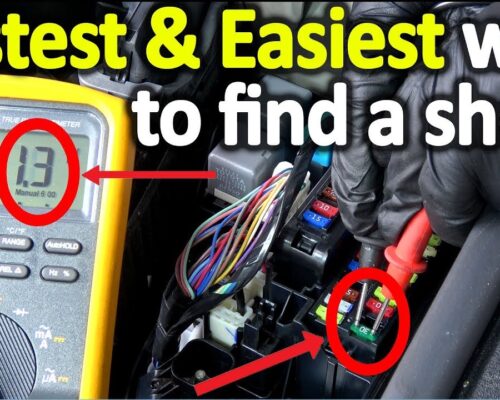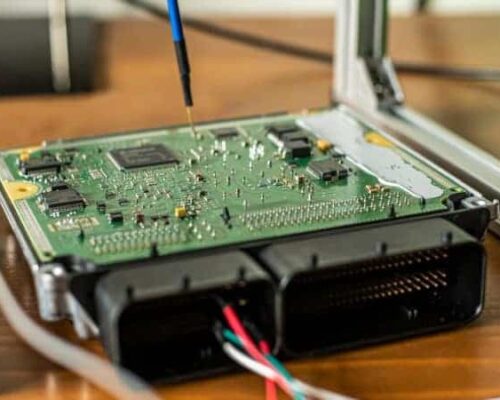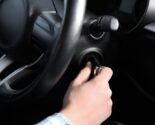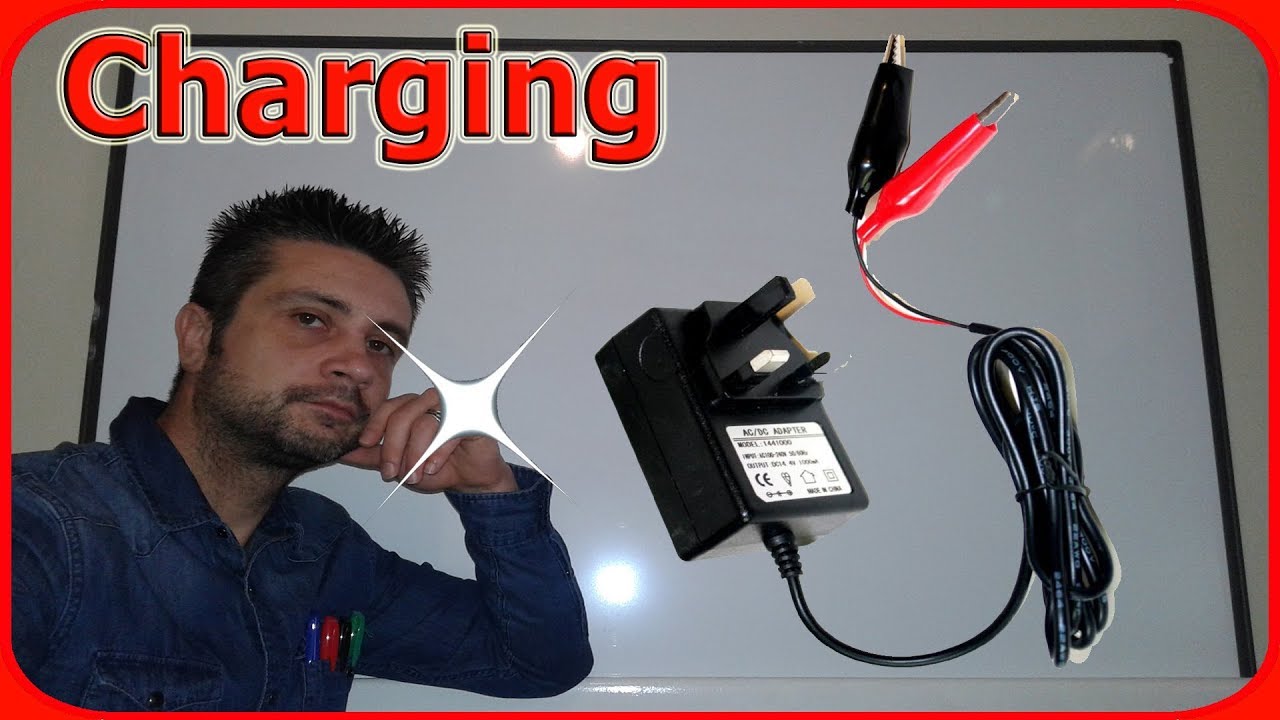
How to Charge a Car Battery Without a Charger
If your car battery dies and you don’t have a charger, there are still a few ways you can charge it. You can jump start your battery by using jumper cables to connect it to another working car battery. You can also use a portable power pack or even a household extension cord.
Just be sure to read the instructions carefully so you don’t damage your battery or yourself.
- Park your car in a safe, level location and turn off the engine
- Open the hood of your car and locate the battery
- Remove the negative (-) terminal cable from the battery first, followed by the positive (+) terminal cable
- Place the positive (+) terminal onto an exposed metal part of the car body (away from the battery)
- This will serve as a ground for your charging process
- Attach one end of the charger’s red positive lead to the positive (+) terminal on the battery, then attach the other end of that lead to the charger’s red positive output port or clamp
- Next, attach one end of black negative lead to charger’s black negative output port or clamp, then touchthe other end of that lead to an exposed metal part of your car’s engine block or frame (this will complete circuit betweencharger and battery)
- 7 Start up your charger according to its instructions (consult owners manual if necessary),making sure that it is set to deliver a voltage no higher than what is specified on your battery
7 Ways on How to Charge Car Battery Without Charger
What Household Items Can You Use to Jumpstart a Car?
If you find yourself in a situation where you need to jumpstart your car, there are a few household items that can help you out. First, you’ll need some jumper cables. If you don’t have any, you can try using a set of alligator clips.
These can be found at most hardware stores.
Next, you’ll need something to use as a power source. This can be another car with a working battery, or even a lawn mower or other small engine.
If you’re using another car, make sure that both cars are turned off and the keys are out of the ignition before attaching the cables.
Once everything is hooked up, start the working car and let it run for a few minutes before starting your own car. This will give the dead battery time to recharge slightly so that it’s easier to start.
If jumpstarting your car doesn’t work, or if it seems like the battery is completely dead, you may need to replace it entirely.
How Can I Charge My Car Battery at Home?
If your car battery is dead, you may be able to charge it at home with a standard household outlet. However, if your battery is severely damaged, it may need to be replaced.
To charge your car battery at home:
1. Park your car in a well-ventilated area and turn off all lights and accessories.
2. Remove the battery from your car. Check the owner’s manual for instructions on how to do this safely.
3. Connect the positive (red) terminal of the charger to the positive terminal of the battery. Then connect the negative (black) terminal of the charger to the negative terminal of the battery.
4. Plug in the charger and set it to “trickle charge” or “slow charge” mode according to the manufacturer’s instructions.
Do not leave unattended! Depending on how discharged your battery is, it could take several hours to fully charge it. 5Once charged, disconnectthe terminals in reverse order: first negative then positive.
, clean any corrosion offthe terminals with a wire brush if necessary..reconnectthe batterytoyourcar..startthe engineandletitrunfora fewminutesbeforeturningitoffagain.
.Nowyoushouldbeabletocompletethe restofyourdrivewithnoissues!
Can You Charge a Car Battery by Yourself?
It is possible to charge a car battery by yourself, but it is important to be aware of the risks involved and take proper precautions. If you are not comfortable working with batteries, it is best to leave this task to a professional.
Charging a car battery can be dangerous if not done properly.
Batteries contain acid that can burn skin and clothing, so it is important to wear gloves and eye protection when handling them. It is also important to use the correct charger for your battery type – using the wrong charger can damage the battery or even cause an explosion.
If you decide to charge your own car battery, make sure you follow the instructions carefully and always disconnect the negative terminal first (to avoid sparks).
Never overcharge the battery – stop charging once it reaches full capacity. And finally, dispose of used batteries properly – don’t just throw them in the trash!
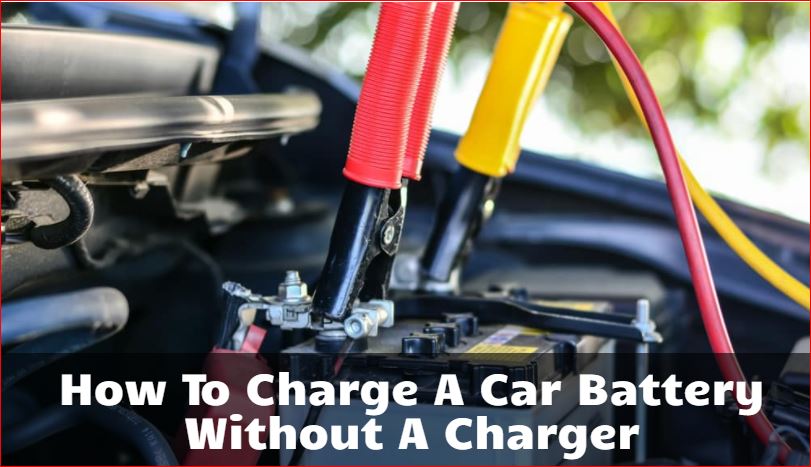
Credit: www.electronicshub.org
Homemade Car Battery Charger
If your car battery is dead, or if you want to be prepared for a roadside emergency, you can easily make a homemade car battery charger. This simple charger will work with any 12-volt lead acid battery, and it only takes a few minutes to put together.
To make your own car battery charger, you’ll need some basic supplies: an automotive battery (preferably one that’s 12 volts), jumper cables, alligator clips, and a household outlet (110 volt).
You’ll also need access to a vehicle with a working alternator.
First, connect the positive terminal of the automotive battery to the positive terminal of the household outlet using the jumper cables. Then, connect the negative terminal of the automotive battery to one of the alligator clips.
Finally, connect the other alligator clip to any metal surface on the engine block of the vehicle with the working alternator.
Turn on the household outlet, and let your charger do its work! It may take a few hours for your dead battery to charge fully using this method, but it’s much cheaper than buying a new one or calling a tow truck.
How to Charge Car Battery With Home Electricity
If your car battery is dead, you may be able to charge it at home with a standard household outlet. Here’s how to do it:
1. Park your car near an outlet and make sure the area is well-ventilated.
You don’t want to breathe in any fumes while you’re working on your car.
2. Turn off all lights and accessories in your car so that you don’t overload the system.
3. Connect one end of the positive (red) jumper cable to the positive terminal of your dead battery.
Then, connect the other end of the positive cable to the positive terminal of a good battery. Make sure that the clamps on both ends of the cables are secure and not touching each other or anything else metal.
4. Now, take the negative (black) jumper cable and connect one end to the negative terminal of the good battery.
The final step is to find a bare metal surface on your car—such as a bolt—and touch it with the other end of the negative cable (this will complete the circuit).
How to Charge Car Battery at Home With Laptop Charger
Most people don’t know that you can charge a car battery at home with a laptop charger. It’s actually very simple to do and only takes a few minutes. Here’s how:
1. Park your car in a well-ventilated area and open the hood. locate the negative (-) and positive (+) terminals on the battery.
2. Connect the black alligator clip of the charger to the negative terminal of the battery, then connect the red alligator clip to the positive terminal of the battery.
3. Plug in your laptop charger to a power outlet and turn it on. The charging process will begin automatically and should take about 30 minutes to complete. Once finished, disconnect the charger from both terminals and close your car’s hood.
How to Charge a Car Battery With a Wall Outlet
If your car battery is dead, you may be able to charge it with a wall outlet. Here’s how:
First, make sure the car is turned off.
Next, locate the positive and negative terminals on the battery. The positive terminal will usually have a red cover, while the negative terminal will usually have a black cover.
Once you’ve located the terminals, connect the positive terminal to the positive side of the charger, and connect the negative terminal to the negative side of the charger.
Finally, plug the charger into a wall outlet and turn it on.
charging process can take several hours, so it’s best to leave your car plugged in overnight. In most cases, you should be able to start your car after charging overnight.
However, if your battery is severely damaged, it may need to be replaced.
How to Charge a Car Battery With a Charger
If your car battery has died, you can use a charger to recharge it. It’s important to choose the right charger for your battery, as using the wrong charger could damage it. Follow these steps to safely charge your car battery with a charger.
First, make sure that the charger is compatible with your car battery. Check the voltage and amperage ratings on the charger and compare them to the ratings on your battery. If they don’t match, don’t use that charger!
Next, connect the positive (red) lead from the charger to the positive terminal on your battery. Then, connect the negative (black) lead from the charger to a metal ground on your car body – not to the negative terminal on your battery. This helps reduce the risk of sparks or explosions.
Now you can plug in the charger and turn it on. Start with a lower setting and gradually increase it until you reach the recommended charging rate for your particular battery. Keep an eye on things while it’s charging – if you notice any sparks or strange smells coming from either the battery orcharger, disconnect everything immediately and call for help!
Once the charging process is complete, carefully disconnect everything in reverse order – firstthe negative lead, thenthe positive lead. And that’s all there is to it!
How to Charge a Phone Battery Without a Charger
One of the most frustrating things that can happen is when your phone dies and you don’t have a charger with you. But don’t despair, there are a few ways that you can charge your phone battery without a charger.
If you have a laptop with you, you can plug your phone into the USB port and it will charge your phone.
This may take a while, but it will eventually give your phone enough juice to make calls or send texts.
If you have access to an outlet, you can also use a power strip with a USB port. Again, this will take some time to charge your phone, but it’s better than nothing.
Finally, if all else fails, there are always public charging stations. Many coffee shops and libraries now offer these for people on the go. Just be sure to keep an eye on your phone so that it doesn’t get stolen!
How to Charge Car Battery at Home Without Inverter
It is not uncommon for car batteries to go dead. There are a number of reasons why this may happen, but it usually boils down to one thing: the battery was not charged properly. If you find yourself in this situation, don’t panic!
You can charge your car battery at home without an inverter.
First, make sure that your car is turned off and the keys are removed. Next, locate the positive and negative terminals on your battery.
The positive terminal will usually be marked with a “+” sign, while the negative terminal will be marked with a “-” sign. Once you have located the terminals, attach the positive lead of your charger to the positive terminal of the battery, and then attach the negative lead of your charger to the negative terminal of the battery.
Now, simply plug in your charger and let it do its job!
Depending on how depleted your battery is, it may take a few hours to fully charge. Once your battery is charged, you should give it a full test drive to ensure that everything is working properly before hitting the road again.
Charge Car Battery With Phone Charger
A car battery is a lead-acid battery, and it needs around 12.6 volts to be fully charged. A phone charger generally provides around 5 volts. So can you charge a car battery with a phone charger?
The answer is yes, but it’s not very effective. It’ll take a long time to charge the battery this way – maybe even days – and there’s a risk of overcharging and damaging the battery. We don’t recommend trying to charge your car battery with a phone charger.
Conclusion
If your car battery dies and you don’t have a charger, you can jumpstart it using another car. First, park the working car next to the one with the dead battery. Make sure both cars are turned off and in “park.”
Then, open the hoods of both cars and locate each battery. Clip the red jumper cable to the positive terminal of the dead battery, and clip the black cable to the negative terminal. Finally, clip the other end of each cable to their corresponding terminals on the working battery.
Start the working car, wait a few minutes, then try starting your car. If it doesn’t work, check that all of your connections are secure before trying again.


